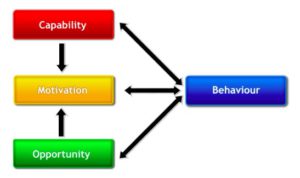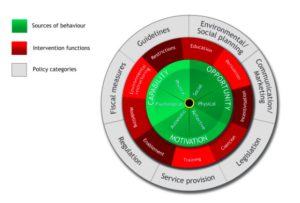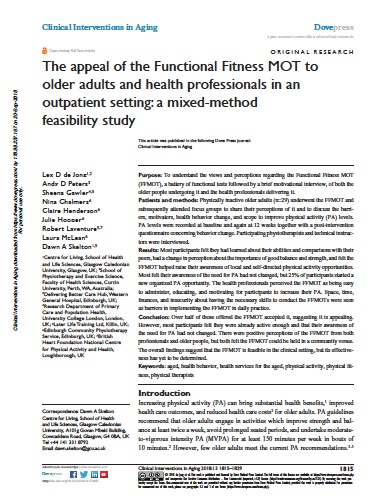 The COM-B behaviour change model is now used extensively in behaviour change interventions in the scientific literature. COM-B (‘capability’, ‘opportunity’, ‘motivation’ and ‘behaviour’) model. This model recognises that behaviour is part of an interacting system involving all these components. Interventions need to change one or more of them in such a way as to put the system into a new configuration and minimise the risk of it reverting. The original research paper on this can be viewed here.
The COM-B behaviour change model is now used extensively in behaviour change interventions in the scientific literature. COM-B (‘capability’, ‘opportunity’, ‘motivation’ and ‘behaviour’) model. This model recognises that behaviour is part of an interacting system involving all these components. Interventions need to change one or more of them in such a way as to put the system into a new configuration and minimise the risk of it reverting. The original research paper on this can be viewed here.
 You can purchase a book on the behaviour change wheel here. The Behaviour Change Wheel (BCW) was developed from 19 frameworks of behaviour change identified in a systematic literature review. It consists of three layers. Surrounding the hub is a layer of nine intervention functions to choose from based on the particular COM-B analysis one has undertaken.
You can purchase a book on the behaviour change wheel here. The Behaviour Change Wheel (BCW) was developed from 19 frameworks of behaviour change identified in a systematic literature review. It consists of three layers. Surrounding the hub is a layer of nine intervention functions to choose from based on the particular COM-B analysis one has undertaken.
The outer layer, the rim of the wheel, identifies seven policy categories that can support the delivery of these intervention functions.
Further information on the use of the model and wheel can be found here.






